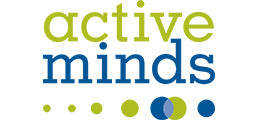"Measure twice, cut once." - Proverb
Although one might fall into the trap of thinking that athletes are meat-heads who don't think, the reality is quite the opposite. Performing well requires focusing on numbers and math. Ask any athlete about the metrics she measures and she’ll spew off a litany of detailed numbers: amount of weight lifted, number of reps performed, number of sets completed, distance ran, minutes or seconds in each training interval, hours of sleep, glasses of water consumed, macronutrient percentages, and on and on.
Measurement is a critical requirement for making progress. If we don't know how we are performing, we can't assess what's working or not working, or how (or whether) we are moving forward towards reaching our goals. In fact, with measurement and numbers, it's tricky for us to have goals... especially fitness goals.
We have had the technology to measure things like weight (scale), time (watch), and heart rate (monitor) for quite some time. As I wrote a few months ago, an American College of Sports Medicine survey of fitness professionals predicted that wearable technology will be the number one trend in 2016. However, only recently have we been able to measure the amount of muscle activation taking place as we exercise, how much each major muscle group is activated, and differences in muscle activation by exercise and by workout. These measurements help athletes perform better by using data to tweak workouts and optimize muscle activity.
I was introduced to the Athos body suit at a conference for fitness professionals in Boston a couple of months ago. After teaching a Core Flyte class for personal trainers and group fitness instructors, I walked back to the Core Flyte trade show booth to see a man dressed in what looked like a superhero body armor. That man was researcher Hanif Benoit who works for Thync, maker of a wearable that impacts brain waves to reduce stress, increase energy, and improve sleep. Hanif recently graduated from Harvard with a masters in biotechnology and informatics. That suit was the Athos suit, which has a series of built-in sensors that measure many things, including muscle activation using electromyography (EMG).
The Athos suit is comprised of a shirt with 16 sensors and pants with 12 sensors. The sensors track heart rate and heart rate variability, breathing patterns, and muscle fatigue. Athletes from the NBA's Karl Anthony Towns to the NFL's Clay Matthews use Athos to monitor and improve their performance.
Hanif was curious about our Core Flytes and wanted to see how they impacted muscle activation compared with traditional body weight exercises. He did a series of exercises with and without Core Flytes, including push-ups, glute bridges, and lunges. The results were great: a big increase in muscle activation – affecting nearly all major muscles – when performing the exercises with Core Flytes.
Hanif is now leading an independent study using the Athos suit to quantify the impact of Core Flytes. Why is this information important? For several reasons. More muscle activation means more efficiency. So, instead of working out for an hour, perhaps we can work out for 20 minutes and get the same results... plus time back. Efficiency is key. The Number One reason people state for not working out is "I don't have time." We could imagine that it is easier to find time for shorter workouts compared with longer ones, especially when they are producing results and therefore motivating us to keep it up. This leads to another benefit: confidence in the efficacy of our workout. It's hard to know if our workout was as beneficial as it could have been simply by sweating or being out of breath or being fatigued, particularly when it comes to strength-building workouts.
In addition, when we work out we want to make sure we are using the muscles we think we are focusing on, and not those that are really helping us "cheat" (think about why swinging our back while doing bicep curls is a no-no). An Athos-optimized workout gives us more confidence that our exercises helped us make progress in building strength and knowing exactly which muscles were affected most, and how they were affected.
While Hanif and his colleagues test subjects in their research lab, we are anxiously awaiting the results. I expect increased muscle activation with Core Flytes based on preliminary findings and the fact that Core Flytes engage more muscle since they require stabilization. I'm excited to share the results of the research as soon as they are available... hopefully by February.
We’d love to hear from you. What do you measure when you work out? Comment below or on our Facebook page or tweet us at @flytefitness.
Be Flyte Fit,
Jeremy Greenberg
Co-Founder & CEO
Flyte Fitness
P.S. DON’T FORGET TO SIGN UP FOR FITNESS UPDATES! CLICK THE BOX AT THE TOP OF THIS PAGE!
